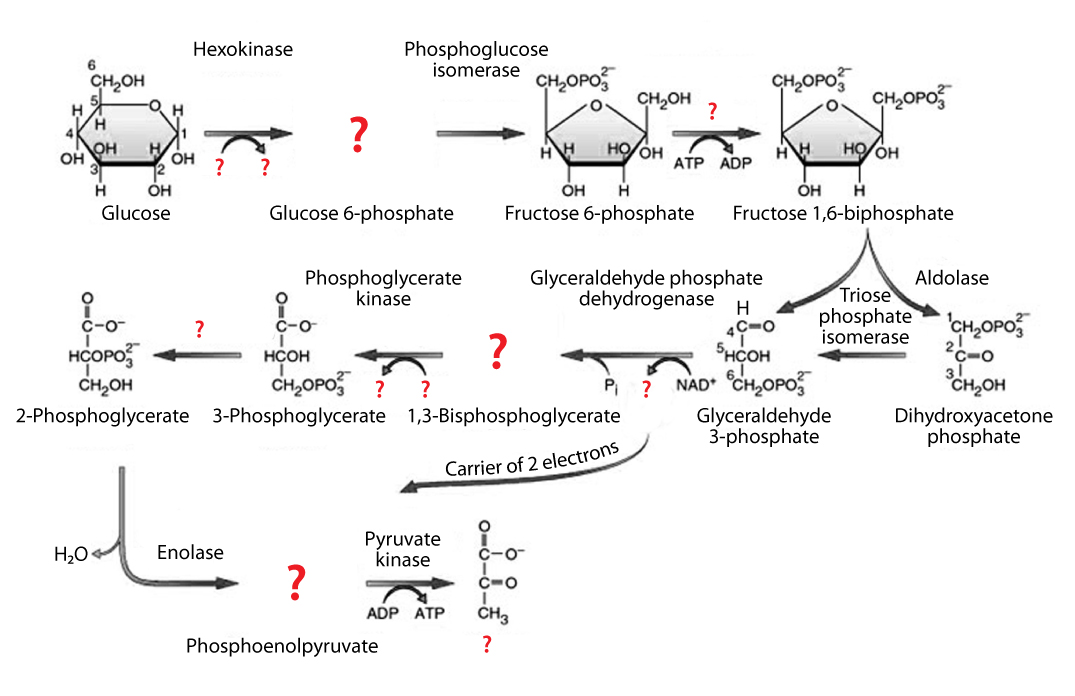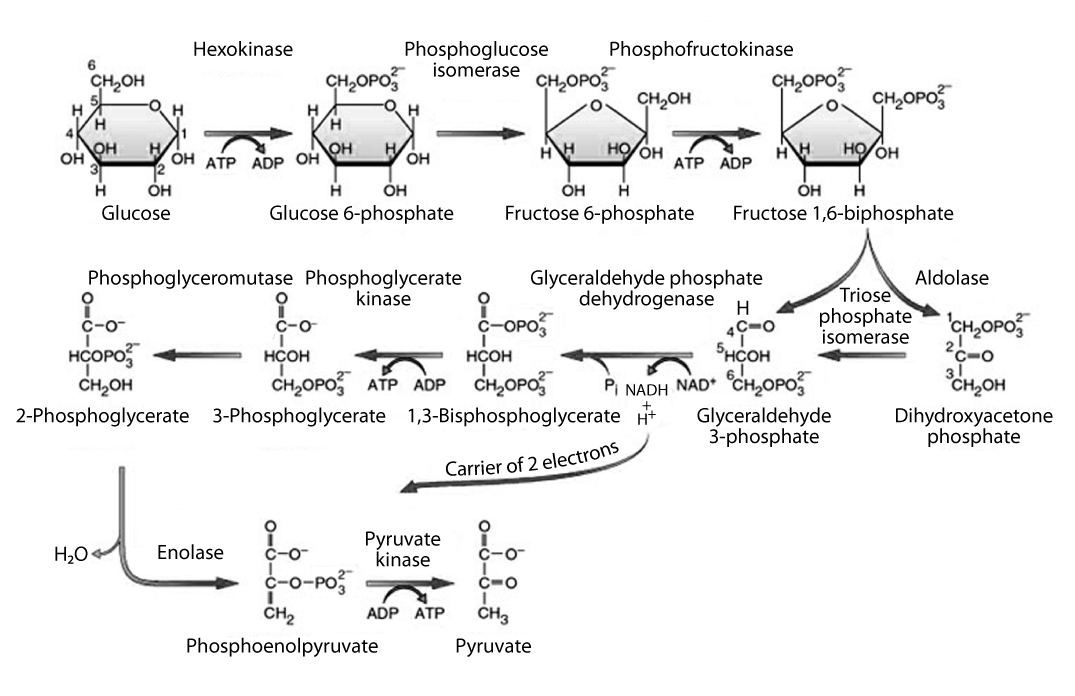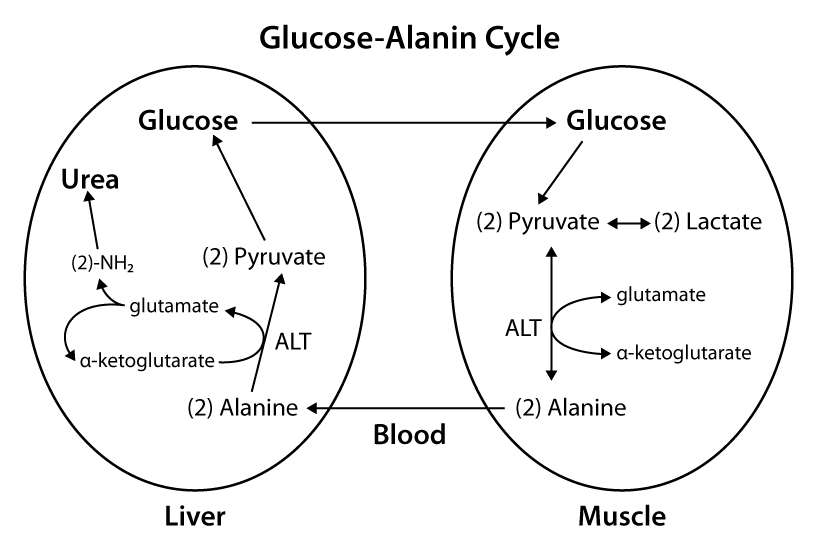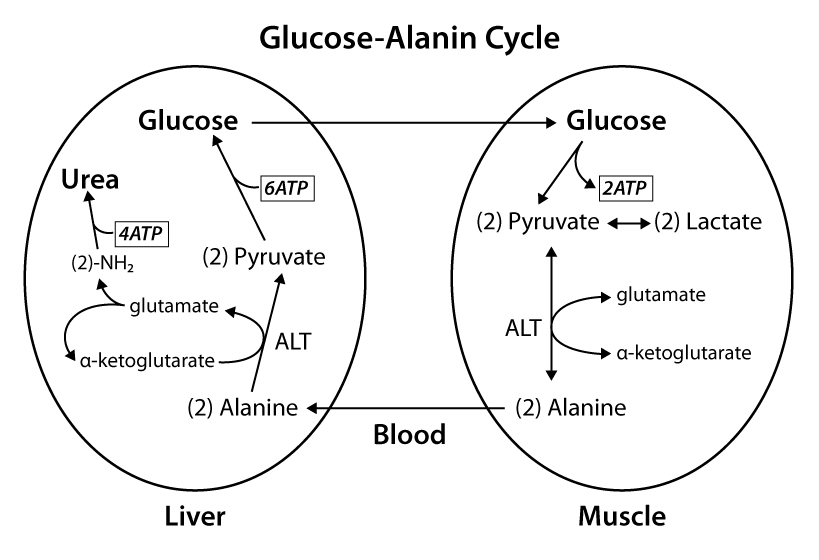
- •Section I Control of the initial level of knowledge. Biochemical constituents of the cell. Methods of biochemical investigations.
- •Examples of Krok 1 tests
- •Clinical cases and Situational tasks
- •77. Discribe the method, shown at the picture below:
- •78. Discribe the method, shown at the picture below:
- •Section іі Enzymes, structure and classification. Regulation of metabolism
- •Е. Whatever part of polypeptide chain of enzyme molecule.
- •Substrate concentration at which reaction rate is half maximal
- •The second enzyme has higher affinity to substrate
- •Competitive
- •Examples of Krok 1 tests
- •Cysteine
- •B. Amylase
- •Peptidases
- •Enteropeptidase
- •Clinical cases and Situational tasks
- •Section ііi Metabolic pathways and bioenergetics. Tricarboxylic acid cycle. Biological oxidation and oxidative phopshorylation
- •1. When atp forms amp:
- •B. Protons
- •Examples of Krok 1 tests
- •Clinical cases and Situational tasks
- •Section іv Structure and metabolism of carbohydrates
- •19. Chose the reaction of glycolysis catalyzed by an enzyme phosphofructokinase:
- •A. Liver
- •Examples of Krok 1 tests
- •Acetoacetate, β-hydroxybulyrate, and acetone
- •Clinical cases and Situational tasks
- •Section іv Structure and metabolism of lipids
- •Examples of Krok 1 tests
- •143. A patient with high rate of obesity was advised to use carnitine as a food additive in order to enhance "fat burning". What is the role of carnitine in the process of fat oxidation?
- •144. Lipids are obvious energetic material for the body. What is the main pathway of fatty acids metabolism in mitochondria?
- •Clinical cases and Situational tasks Situational tasks
- •179. The patient is observed an allocation of undigested fat in the faeces. What are the possible causes for this?
- •184. Free cholesterol can affect cholesterol metabolism in the body by inhibiting cholesterol biosynthesis. By which step free cholesterol can inhibit its biosynthesis?
- •186. Explain the mechanism of phospholipids breakdown, shown at the scheme below:
- •Section VI Structure and metabolism of amino acids
- •B. Amylase
- •Examples of Krok 1 tests
- •112. According to clinical indications a patient was administered pyridoxal phosphate. What processes is this medication intended to correct?
- •Clinical cases and Situational tasks
- •145. In a patient 10 g of urine per day is excreted. Evaluate this result.
- •151. Skin color is the aggregate result of the expression of a number of genes modified by ethnic origin and genetic inheritance. What can cause the hypopigmentation?
- •Section VII Principles of molecular biology and molecular genetics
- •Examples of Krok 1 tests
- •Clinical cases and Situational tasks
- •108. List and describe properties of the genetic code.
- •113. Fill in the blanks.
- •114. Put the numbers of the enzymes on their place in the picture. Using arrows indicate the direction of replication and direction of synthesis of leading and lagging strands.
- •Section VIII Molecular mechanisms of hormone action on target cells. Biochemistry of hormonal regulation
- •Examples of Krok 1 tests
- •78. For analgesia, a certain substance which imitates the physiological properties of morphine but is synthesized inside the human brain can be used. Name this substance.
- •80. A patient suffering from rheumatism was administered glucocorticoid therapy. What changes in carbohydrate metabolism in liver can be expected?
- •88. In blood of a patient a hypercalcemia, hypophosphatemia, in urine – hyperphosphaturia is observed. What is a possible cause of this state?
- •90. In 13 years old girl a hypotension and polyuria is observed. Preliminary diagnosis – diabetes insipidus. It is caused by deficiency of:
- •93. Signaling via prostanoids begins by interaction of the prostanoid with its receptor. The receptor involved is usually located in which part of the cell?
- •Clinical cases and Situational tasks
- •97. In 13 years old girl a hypotension and polyuria is observed. Preliminary diagnosis – diabetes insipidus. Which hormone deficiency can cause this disease?
- •99. The thyroid hormones t3 and t4 are synthesized in the follicular cells of the thyroid gland. From which of the following essential amino acids are the thyroid hormones synthesized?
- •101. Name types of signalling:
- •Section IX Biochemistry of the nervous tissue
- •С. Ketone bodies
- •24. What compound may be used by the cns cells after extensive physical exercises and prolonged starvation?
- •Examples of Krok 1 tests
- •Clinical cases and Situational tasks
- •114. Describe the structure of a synapse and explain how it operates?
- •Section X Biochemistry of the Muscular tissue
- •D. Glycogenolysis in muscles
- •С. Fatigue faster compared to the red fibers
- •Examples of Krok 1 tests
- •Clinical cases and Situational tasks
- •Section XI Biochemistry of nutrition
- •1. Note substance, which activates pepsinogen to pepsin:
- •2. Chose the enzyme which plays an important role in production of hydrochloric acid by parietal cells of gastric mucosa glands:
- •3. Which of the following is not a function of the pancreas?
- •Examples of Krok 1 tests
- •Clinical cases and Situational tasks
- •62. The clinical and laboratory examination of the patient evaluated the presence of the lactic acid in his gastric juice. What does it indicate? What should be recommended to the patient?
- •69. Discribe the mechanism of hydrochloric acid production shown at the picture:
- •Section XII Functional role of water soluble and fat soluble vitamins in metabolism and providement of cell functions
- •Examples of Krok 1 tests
- •Clinical cases and Situational tasks
- •100. A deficiency in thiamine (vitamin b1) would most likely lead to which clinical manifestations?
- •Section XIII Biochemistry and pathobiochemistry of blood
- •Examples of Krok 1 tests
- •Clinical cases and Situational tasks
- •89. The blood clotting cascade in humans is represented in the picture below. Using this scheme answer the following questions:
- •Section XIV Functional and clinical biochemistry of liver tissue. Biotransformation of xenobiotics and endogenous toxic compounds
- •Examples of Krok 1 tests
- •Clinical cases and Situational tasks
- •Section XV Water and mineral metabolism
- •Examples of Krok 1 tests
- •Clinical cases and Situational tasks
- •Section XVI Functional role of kidneys in urinogenesis. Normal and pathological constituents of urine
- •Examples of Krok 1 tests
- •Clinical cases and Situational tasks
- •Section XVII Biochemical constituents of connective tissue
- •Examples of Krok 1 Tests
- •Clinical cases and Situational tasks
- •34. Patient with burn disease is at the risk of formation of blood clots in blood vessels. What glycosaminoglycan may be used to prevent formation of blood clots?
- •Section XVIII Biochemistry of saliva and tooth tissue
- •Examples of Krok 1 tests
- •Clinical cases and Situational tasks
- •Section XIX. Biochemical reactions
- •References:
Clinical cases and Situational tasks
157. What substances are used for the synthesis of glucose in the human body during prolonged fasting or exhausting work? Explain your answer.
Answer: In such conditions, synthesis of glucose is possible from noncarbohydrate compounds by gluconeogenesis. These metabolites are lactic and pyruvic acids, glycogenic amino acids, glycerol.
158. Explain the negative impact of excessive intake of carbohydrates on the human body. Which biochemical disorders it causes?
Answer: Excessive consumption of carbohydrates leads to the synthesis of lipids, obesity, atherosclerosis, development of cardiovascular diseases.
159. Examination of a patient revealed increased activity of LDH1, LDH2 and creatine. What human organ might be damaged?
Answer: Increased activity of LDH1, LDH2 and creatine in blood serum indicates development of pathological process in heart muscle.
160. Diastase was not indicated in the urine of a patient during biochemical investigations. Explain results of the test.
Answer: Deficiency of diastase in patients’ urine indicates acute renal failure.
161. A patient was transported to the hospital. Examination revealed the next indexes: concentration of blood glucose – 10 mmol/l, concentration of glucose in urine – 5.5%, concentration of ketone bodies in blood serum – increased. What is the most likely diagnosis?
Answer: The above symptoms indicate hyperglycemic coma.
162. A female infant appeared normal at birth but developed signs of liver disease and muscular weakness at 3 months. She had periods of hypoglycemia, particularly on awakening. Examination revealed an enlarged liver. Laboratory analyses following fasting revealed ketoacidosis, blood pH 7.25, and elevations in both alanine transaminase (ALT) and aspartate transaminase (AST). Administration of glucagon following a carbohydrate meal elicited a normal rise in blood glucose, but glucose levels did not rise when glucagon was administered following an overnight fast. Liver biopsy revealed an increase in the glycogen content (6 percent of wet weight). Deficiency of what enzyme is a most likely for this patient? Explain your answer.
Answer: Definitive diagnosis would await analysis of the glycogen structure and enzyme activities, but the hepatomegaly, increased liver glycogen content, fasting hypoglycemia, and muscle weakness are consistent with Cori disease, glycogen storage disease type III. The increase in glycogen content results from an inability to degrade glycogen beyond the limit dextrin of phosphorylase. A deficiency in the debranching enzyme leaves glycogen with short outer branches.
163. Fill in the blanks:

Answer:

164. The glucose-alanine cycle is used primarily as a mechanism for skeletal muscle to eliminate nitrogen while replenishing its energy supply.
Put requirements and production of ATP into their place in glucose-alanine cycle presented in the picture below.
Explain biological significance of glucose-alanine cycle in humans.

Answer:
a.

b. Glucose oxidation produces pyruvate which can undergo transamination to alanine. This reaction is catalyzed by alanine transaminase, ALT (ALT used to be called serum glutamate-pyruvate transaminase, SGPT). Additionally, during periods of fasting, skeletal muscle protein is degraded for the energy value of the amino acid carbons and alanine is a major amino acid in protein. The alanine then enters the blood stream and is transported to the liver. Within the liver alanine is converted back to pyruvate which is then a source of carbon atoms for gluconeogenesis. The newly formed glucose can then enter the blood for delivery back to the muscle. The amino group transported from the muscle to the liver in the form of alanine is converted to urea in the urea cycle and excreted.
165. Indicate enzymes catalyzing the following reactions of HMP:

Answer: 1 – glucose-6-phosphate dehydrogenase, 2 – lactonase, 3 – 6-phosphogluconate dehydrogenase
